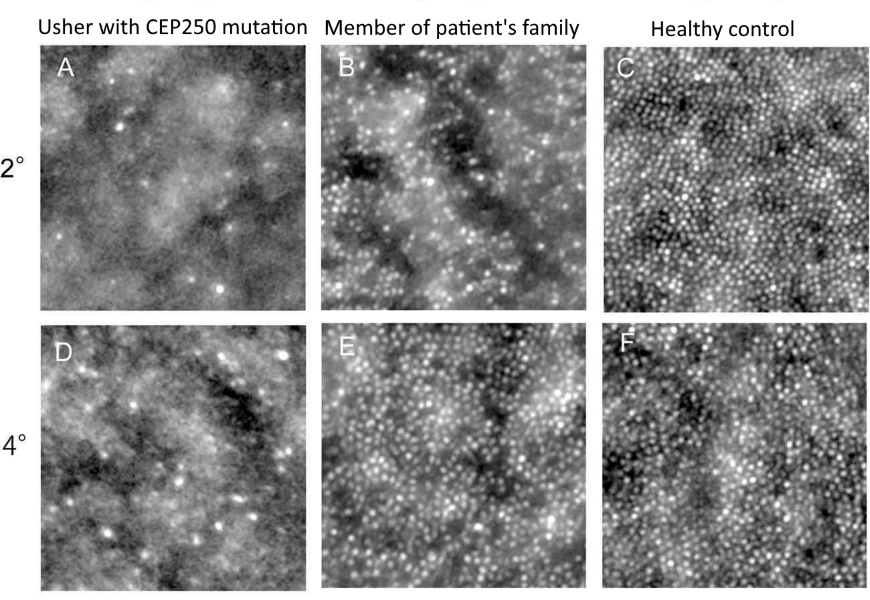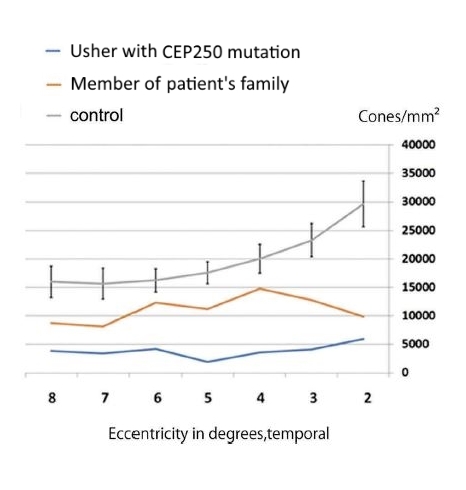Case study using rtx1 reveals reduced photoreceptor density in atypical Usher syndrome
The Usher syndrome is one of the most common types of retinitis pigmentosa, an inherited retinal disorder with an estimated prevalence between 1:3000 and 1:5000. Patients with Usher syndrome usually suffer from losses in both hearing and vision. However, in some patients, mutations in the CEP250 gene cause an atypical Usher syndrome, where ophthalmological symptoms are mild, thus difficult to detect using conventional retinal imaging techniques.
A team of medical researchers at the Nippon Medical School and the Tokyo Medical University in Japan, led by Prof. Shuhei Kameya, recently published a case study about CEP250 gene mutation. They report that the rtx1 Adaptive Optics Retinal Camera revealed significant reduction in photoreceptor cell density in a patient with atypical Usher syndrome as well as in a member of the patient’s family.
The authors concluded: “Because the ophthalmological phenotypes were very mild, high-resolution retinal imaging analysis, such as AO, will be helpful in diagnosing CEP250-associated disease”.


Article reference : Kubota, D. et al. CEP250 Mutations Associated with Mild Cone-Rod Dystrophy and Sensorineural Hearing Loss in a Japanese Family. Ophthalmic Genetics 1–8 (2018)
Click here to learn more about the rtx1 Adaptive Optics Retinal Camera